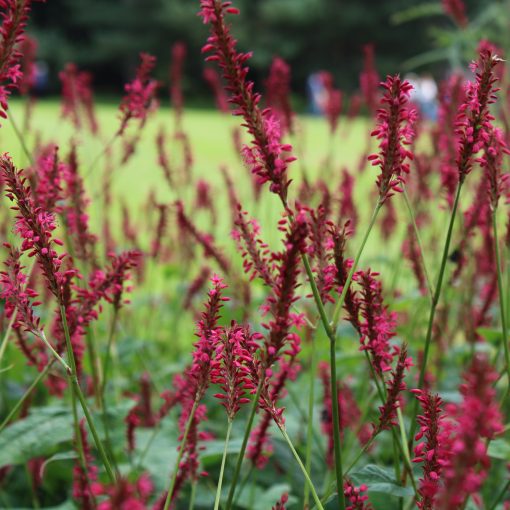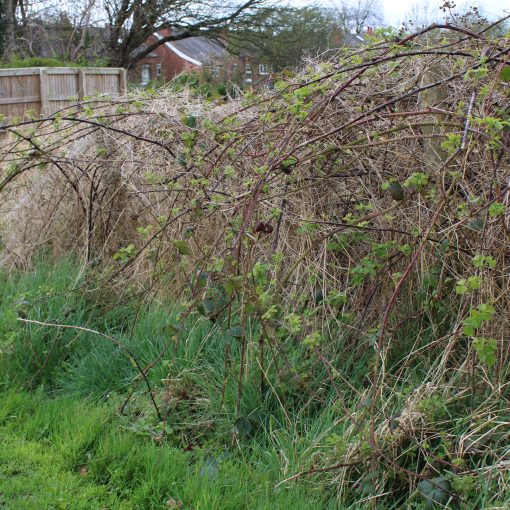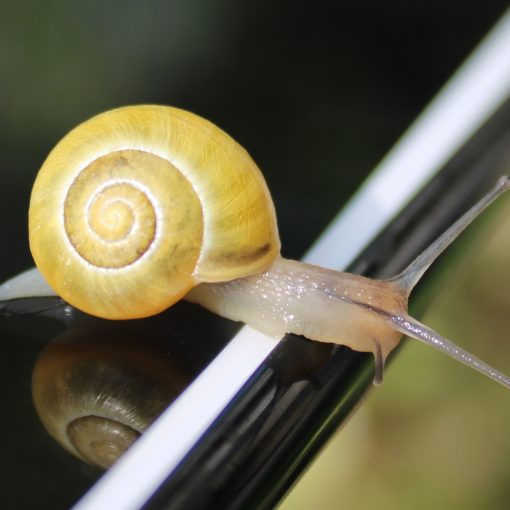Introduction
There are more than 500 species of aphid in the UK. Some feed on a wide range of plants and some are more selective about which plants they eat. The Black Bean aphid, commonly known as blackfly, is 2mm long with a pear shaped soft body. Aphids are piercing sap suckers.
Black bean aphid lives on 2 main types of host plants. In Winter and early Spring they lives on Shrubs (Philadelphus, Euonymus and Viburnum) and then from May onwards they migrate to herbaceous plants such as Broad Bean, French bean, Nasturtium and Dahlia.
This is a particular pest of the tips of Broad bean (Vicia faba) as these are hardy beans which can be sown in Autumn and their tender young foliage is coming into growth just as the aphid is ‘moving house’ in May. They are often seen clusterd at the tips of Broad Bean plants.
Damage and Symptoms
- Commonly damage broad bean but also Runner and French beans, Nasturtium, Dahlias, Philadelphus, Euonymus and Viburnum. Mostly a problem on Broad bean causing misshapen pods and so affects the crop yield. Look out for clusters of the pest on soft new growth on these particular host plants.
- Aphids have a piercing and sucking feeding mouthpart and excrete a sugary solution (Honeydew) which can be seen as a shiny surface on the leaves below the aphids. Honeydew often attracts development of sooty mould which shows as a black coating on the leaves below the aphids.
- Presence of dandruff like flakes on the leaves below the aphids – these are the shed exoskeletons which the aphids shed as they grow bigger.
- Often attended by ants who fend off predators in return for honeydew.
- Plant growth can be stunted.
- Seed production can be seriously reduced. Broad bean pods do not develop well.
- Distorted growth of leaves and malformation of growing tips.
Symptoms In Summary: aphids seen in clusters around soft growing tips / stunted growth / reduced seed production, ash- like cast skins present / ants / shiny sticky honeydew / sooty mould.
Lifecyle Diagram

Aphids have an incomplete metamorphosis Life cycle. Unlike a butterfly they never undergo a dramatic transformation between juvenile and adult stage. The juvenile stage is called a nymph. Small Nymphs hatch from the eggs, feed and grow and then moult 4 times as they grow larger and the exoskeleton becomes too tight. Aphids always look like aphids, they just vary in size. They may be winged or wingless. They develop wings when they need to move to another host plant. There are many generations in one growing season.
Black Bean aphid survives the Winter as an egg on Euonymus, Philadelphus and Viburnum species. The aphids which emerge in late Winter/early Spring are all female and feed on the young growth of the host shrubs. When the host shrub’s leaves become tough, winged females are produced which fly to the Summer host, particularly broad bean. This house move usually happens in May. Once on the Broad bean, the population explodes as they give birth to live young which does not involve fertilisation. (Asexual reproduction)
After feeding on herbaceous plants over the Summer, winged male and female aphids are produced in Autumn which migrate to the shrubby host plants, mate and lay eggs. (Sexual reproduction) Here they will over Winter as eggs.
Life Cycle In Summary: 2 separate types of host plant depending on the season. Reproduce asexually (Give birth to live young) and sexually (Eggs) Winged and wingless versions. Whole life cycle can take just weeks and there are many generation in one growing season.
Knowing the lifecycle can aid in timing of biological control application, knowing when to place physical barriers up and when and where to look for adults/eggs. It also helps guide frequency of hand squishing adults to limit population size.
The video link below does not focus on this species of aphid but shows close up film of female aphids giving birth and shedding their skins.
https://www.youtube.com/watch?v=HVTitHBwpN0


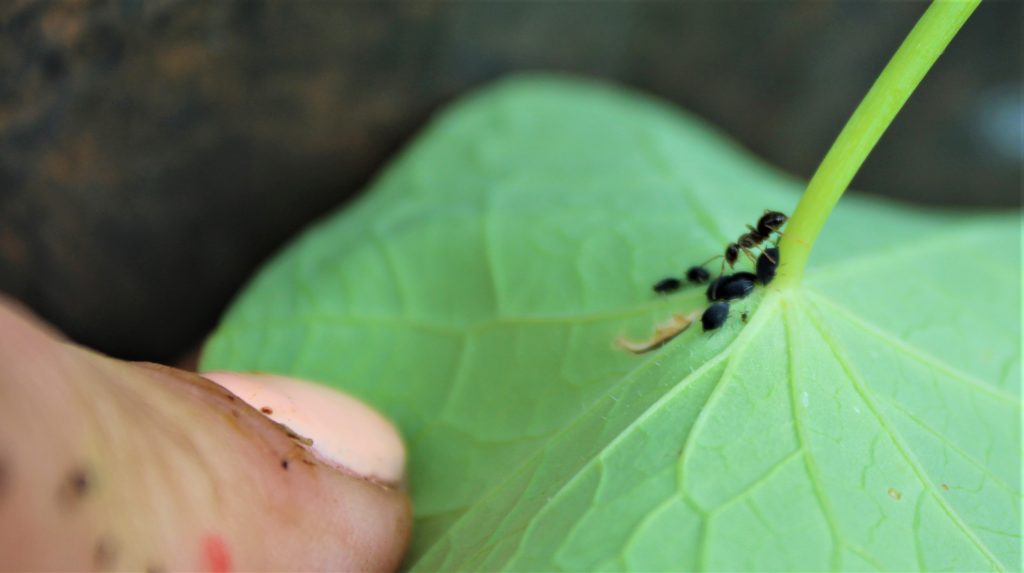
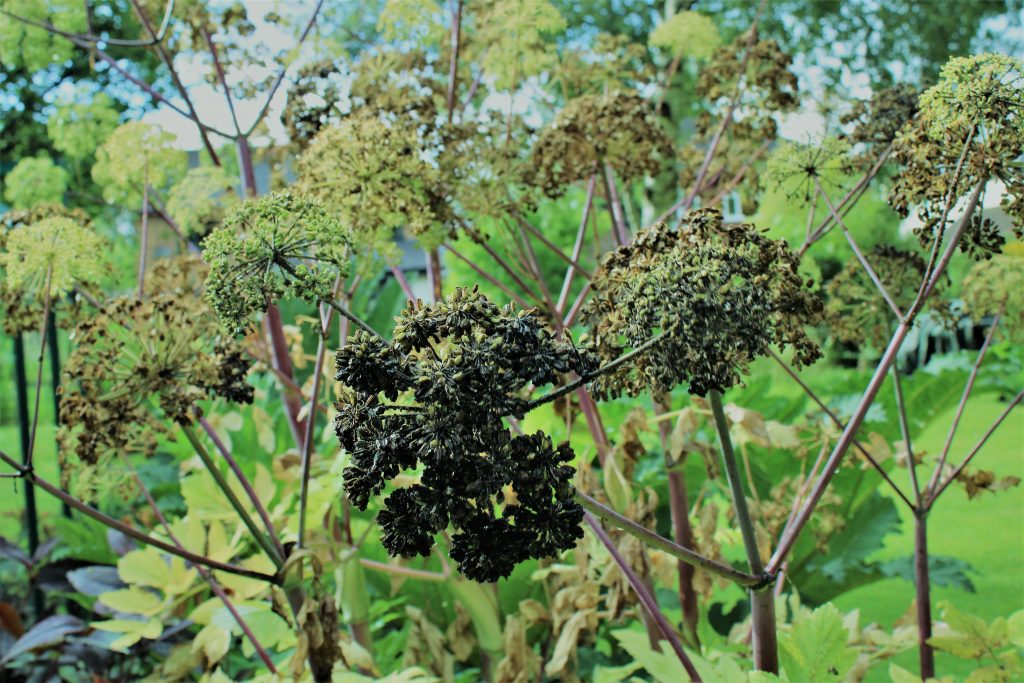
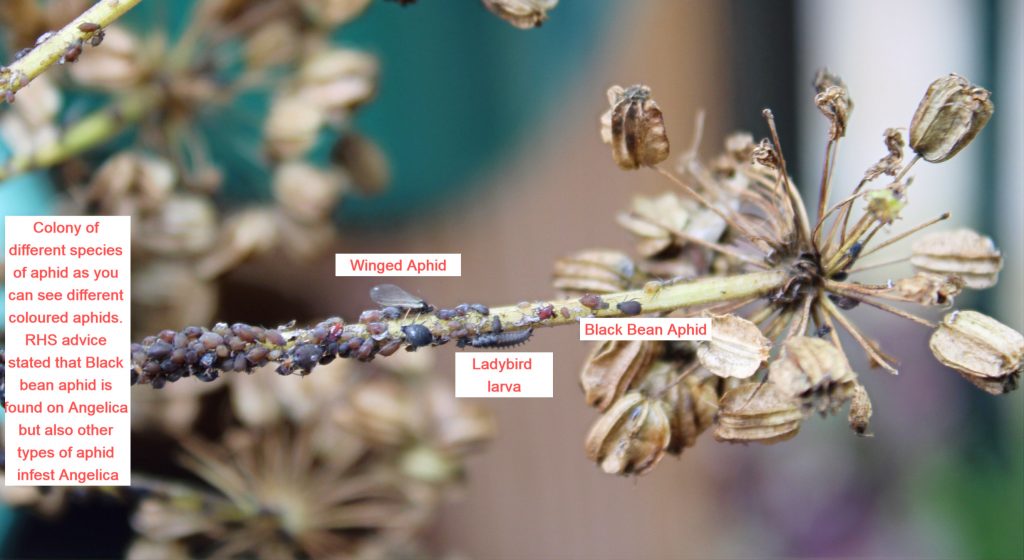
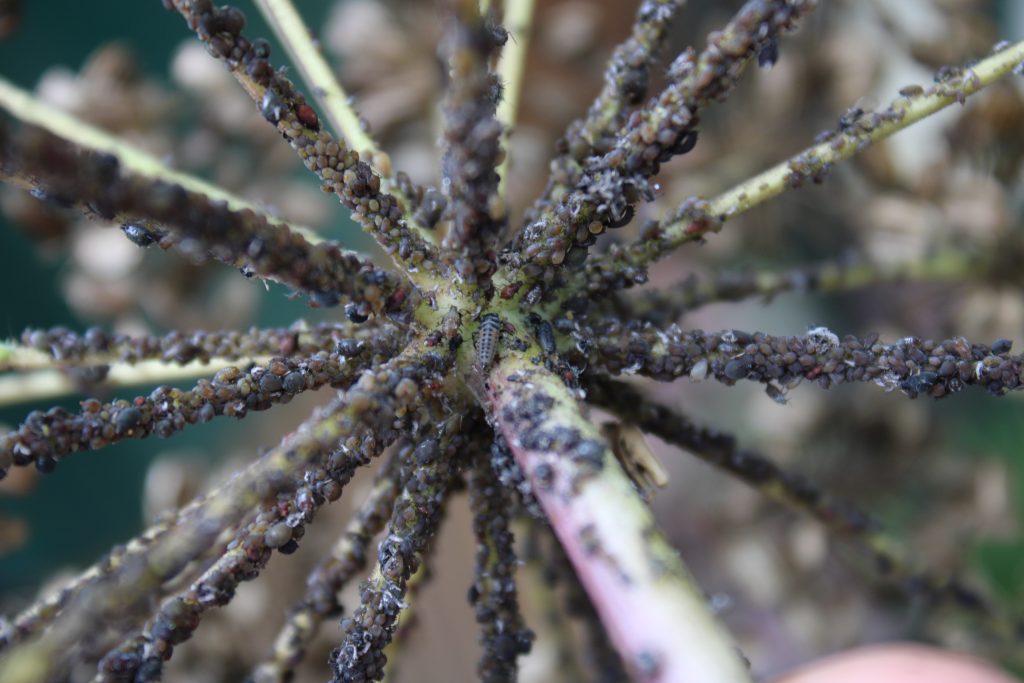
How do Black Bean aphid survive and spread so quickly?
They have 2 methods of reproduction
- Reproduction is asexual in Spring and Summer which is faster as no fertilisation is needed so population explosion is rapid. Sexual reproduction in Autumn gives genetic variation and allows over wintering as eggs in cold conditions.
- Winged forms are only produced when needed so energy is not wasted producing wings when not needed.
- The life cycle is rapid, particularly when temperatures are higher so they can rapidly colonise a plant.
- They have different Winter and Summer Host plants so are difficult to locate.
- They often feed under leaves so are difficult to see.
Control
Biological
Larval stage of ladybirds, lacewings and hoverflies feed on aphids. Parasitic wasps are natural predators in the garden. To encourage predators of aphids design a biodiverse organic garden.
Chemical
Plant oil sprays will block spiracles and rely on good contact with the aphid body. They are not residual so Broad beans can be eaten soon after spraying.
Fatty acids (soap sprays) dry out cuticle of the soft bodied aphid and may also block spiracles. Again they rely on good contact with the pest and are not residual.
Deltamethrin (Synthetic pyrethroid) This chemical affects the nervous system of aphids and remains active for some time so should not be used on edible plants. It is toxic to aquatic life and beneficial insects.
Please note that I am not recommending the use of chemicals in the garden, just showing you the range of control methods available. You may be asked which chemical control is available in the exam.
All chemicals will also kill the beneficial insects but as fatty acids and plant oils are not residual they are the lesser of the chemical evils.
Cultural
Hand picking and squishing. Because they are soft bodied they are very vulnerable to squishing although a rather gruesome job.
Water jet – a strong spray will wash them off the plant and the force of the jet will kill many. They don’t walk very fast so will not recolonise.
Tips of Broad Bean which are infested can be pinched out and disposed of in late May.
Live with small populations and let the natural predators deal with them.
Do not overfeed as this causes sappy growth which aphids prefer.
Preventative
Encourage natural predators (Biological Control) by planting a diverse range of nectar and pollen rich plants with habitats suitable for ladybirds, hoverflies and lacewings. Inspect new plants for pest and remove them.
Organic Control methods Video
https://www.youtube.com/watch?time_continue=22&v=8UI_Bm0aTl0&feature=emb_logo
This video describes organic methods of aphid control.


